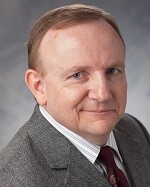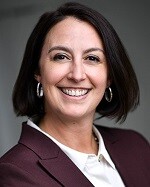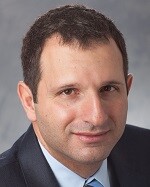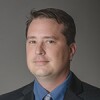Engineering technology company Emerson has a plan to improve automation, with a new architecture designed to streamline the process and eliminate hurdles.
The company presented its plan for improved automation architecture at its annual Emerson Exchange conference. The plan involves giving attention to three main realms of automation—intelligent fields, edge computing, and the cloud.
“The shift to a software-defined architecture across the cloud, edge, and intelligent field will eliminate functional and architectural silos, creating a ‘boundless automation’ platform,” said Peter Zornio, chief technology officer for Emerson’s Automation Solutions business.

A major stumbling block to effective automation has been the gulf between information technology (IT) and operation technology (OT), Zornio said. The split between IT and OT, “well, that’s not going to work as … we go forward in the world of digital transformation,” he said.
Bringing those two groups closer together will go a long way toward facilitating automation, but bringing them together isn’t always easy. Inertia and distrust must be overcome.
The hierarchy of layers of automation traditionally has followed organization, Zornio said, pointing out that data moves upward “from the sensors to the board room.” He added that this traditional architecture has led to a hard segmentation between OT and IT.
This hierarchy of layers, however, has allowed for built-in security, and some worry that bringing IT and OT together could jeopardize that security. “We kind of count on these layers to be our security hierarchy, where we protect the lower layers that are the most critical by providing firewalls and other layers of security on top of them in the upper layers,” Zornio said.
The layered hierarchy in which data moves in one direction, from the bottom to the top, while allowing for security, “actually restricts some of the data flow, and it prevents a lot of valuable information from easily moving up through the layers and getting to where you want it to be,” Zornio said.
This traditional automation architecture also creates vertical siloes of data. “You’ll find a vertical silo of reliability data. You’ll find a vertical silo of quality data, and, increasingly, you’ll find a vertical silo of sustainability and energy-consumption kind of data,” Zornio said. The solution to this, he added, has been the OT data lake.
“Today, when we actually want to bring all this data up into the cloud or we want to have universal visibility of it, the traditional solution is to layer yet another data model and data aggregation on top of it that we call the OT data lake,” Zornio said, adding, “That’s not going to cut it as we go forward. There’s a better way.”
So, Emerson wants to renovate automation architecture by focusing on the domains of intelligent fields, the edge, and the cloud.
Intelligent Fields
An intelligent field consists of devices—sensors collecting data or devices taking an action such as manipulating a control valve—that are physically connected to assets. Emerson has plans to bolster these devices.

Laura Schafer, vice president for pervasive sensing and connectivity at Emerson Automation Solutions, said that her company is targeting the vast amounts of data that are collected by these devices but that are difficult to use with the current architecture. “Rich data sets that are just criminally underused, we want to unlock all of that with the intelligent field,” she said.
The key to unlocking that data, Schafer said, is wireless connectivity, which includes increasingly available 5G technology. “I think wireless is going to continue to be a very important vehicle for enabling more devices to be adopted,” she said. “Wireless allows you to drop in data where it’s needed.”
As these intelligent field devices are improved, Zornio said, they are becoming more like edge devices, with the ability to run programs themselves.
The Edge
“The edge,” said Claudio Fayad, vice president of technology, process systems, and solutions at Emerson Automation Solutions, “is where IT and OT come together.”

The edge simply is local computing done where the data is being generated before the data has moved over the public internet. This local computing power “offers a different way to talk about automation,” Fayad said, “a way to talk about it that is a lot broader and more comprehensive. The edge is where we break all the siloes.”
But the data and processing results can’t stay on the edge. This is where the cloud comes in.
The Cloud
The cloud consists of remote banks of computing resources, really just someone else’s computer, and its use has grown in leaps and bounds. “The cloud has conquered IT,” Zornio said. “The cloud has become something that’s really transformed the way software is written, designed, and deployed.”
But OT has been reluctant to adopt it because of security concerns. These concerns are being addressed with what is being called “zero-trust security.” “That’s the idea that, rather than having layers and protecting the most important critical stuff by having layers on top of it as a firewall or as a protective shield, that you inherently start out trusting no one,” Zornio said, “and that applications in any one of these computing environments grants access rights and authorization to access that data and work with it on a per-application basis.”
Zero-trust security seems to be putting the OT world a bit more at ease, and the initial security fears from having operational data on someone else’s computer are beginning to melt away. “The skepticism, I would say, has rapidly been declining,” Zornio said, “largely driven because of digital transformation programs … which have pushed IT and OT to collaborate more.”
Zornio said the increased trust in the cloud, better data access on the edge, and improved intelligent field devices will help Emerson reach its goal of “boundless automation.”
“The way we see the future …,” he said, “is three parallel, or peer, computing domains—the intelligent field, the edge, and the cloud—that are tied together through a cohesive software platform so that software running in any one of these domains is able to seamlessly interconnect and blend the data between all three of them together into a holistic data model.”


